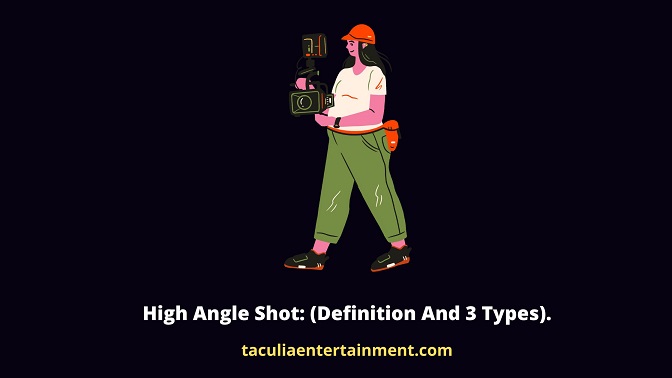
In this article, I am going to show you the definition and 3 types of high angle shot.
If you are looking for an element to add to the story you are trying to tell in your filmmaking or photo shoots, the high angle or angle of view is one of those you should consider.
You can make your high angle shot either subtle or extreme; as well as tight or wide. Sometimes you can use it with a purpose or simply because it looks cool.
However, this article is going to focus on the use of high angle shots with a purpose. This is why I am going to show you the 3 types of high angle shot you should use which are the narrative, the overhead, and the character-driven high angle.
But before I move on to explain these 3 types of high angle shots, let us first of all look at the definition of a high angle shot.
What is a high angle shot?
The high angle shot is a kind of camera angle that is taken with the camera placed above the subject while it points down to the scene.
It is a cinematic or photography technique that determines how a subject is filmed.
There are various types of camera angles, shots, and movements that are used to keep the audience connected to each scene of video content.
For instance, the Point Of View (POV), low angle shot, etc. The high angle shot is used by a cinematographer to makeeach a scene of a movie production look and feels in its own specific way.
Let’s move on from here to explore the 3 types of high angle shot.
What are the 3 types of high angle shots?
The 3 types of high angle shots are:
- The narrative high angle shot.
- Overhead high angle shot.
- Character-driven high angle shot.
1. The narrative high angle shot.
This type of high angle shot is used to help the audience have a view of a broad scene or a large crowd. This kind of shot is typically used to establish context.
With this type of high angle shot, an audience will have a better view of the context and understand the weight of the location or crowd.
The camera usually hovers or sweeps over the scene, and this usually looks very impressive when it is shot with a crane or drone.
The intention of this type of high angle shot is not to draw much attention from the viewer, nor throw them off balance.
It is simply to help them have a better understand of where the scene is taking place.
2. Overhead high angle shot.
Also known as “visceral”, “birds eye view” or an ’emotional shot”, this type of high angle shot is filmed almost above the scene with the intention of creating thrill or tension for the viewers.
When this shot type is used, viewers are going to be anxious and feel sympathetic toward the character, hoping nothing bad happens to him.
This shot will in no way give any new information about the scene, but will have a very strong emotional impact on the viewer, and leaves them at the edge of their seats.
3. The character-driven high angle shot.
The character-driven high angle shot combines the elements of both the narrative and overhead high angle shots.
This shot makes the subject appear small and weak, and in so doing easily communicates to the audience that he is vulnerable.
What is a high angle shot used for?
As we can see so far from this article, high angle shots can be used in 3 ways, which are: to add information that is strictly narrative, to create an overhead or emotional response, and to present the characters from a perspective that makes them seem vulnerable or diminished.
Conclusion.
So, while it can definitely look great to use high-angle shots, you must not use them because they look cool. Rather, use them with a purpose and to add a narrative and emotion to your story.




